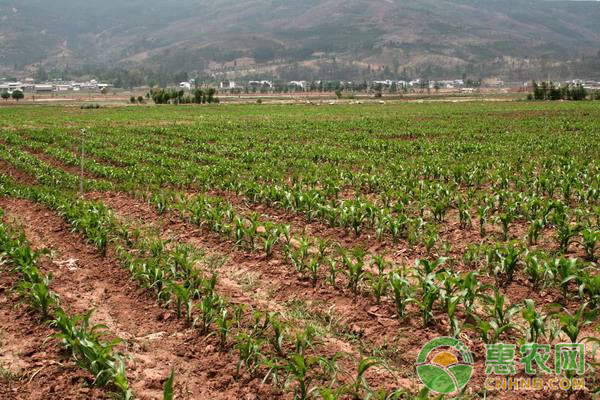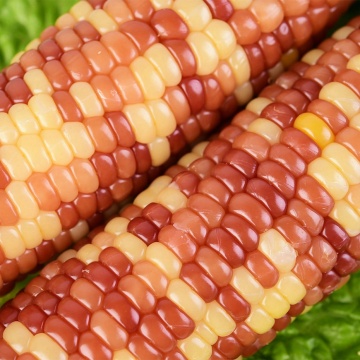What kind of damage will the low temperature cause to the corn seedlings? What are the measures to prevent cold damage from corn seedlings?
![]() September 17, 2021
September 17, 2021
Although corn is a multi-grain, it is very fragile when it is still a corn seedling. The temperature requirement of corn seedlings is very high, especially the low temperature will cause cold damage or freezing damage to corn seedlings.

Because China is a continental monsoon climate, at the end of April and May at the turn of spring and summer, the weather is often fickle, and extreme extreme cooling has caused great harm to the spring sowing corn in the north. To give a factual case, in 2014, a strong cooling process, the cooling range reached 6-12 ° C, and some areas reached 10-16 ° C. The severe cooling has caused serious damage to the early-emerged corn fields that have emerged in Beijing, Tianjin, northern Hebei, central and eastern Inner Mongolia, and western Liaoning. The leaves of the seedlings have withered, and more than 80% of the seedlings in the frozen field have dried up. . And from April 30 to May 1, 2015, the snow was released in various places in Chifeng, Inner Mongolia. The unearthed corn seedlings died due to large area of freezing and the agricultural production was seriously lost.
To know that corn is a grass crop, in the case of normal sowing depth, before the emergence of the corn to the 4-leaf stage, the growth point is about 3 cm below the surface of the earth. With the growth and development of the maize seedlings and the differentiation of the leaves, growth The point moves up gradually until the joint reaches the surface. Therefore, grass crops such as corn have certain low temperature resistance. Before 3 leaves of corn, the seedlings will not freeze to death at 0 °C, and the low temperature (4-5h) -2 ~ -3 °C can be recovered in the future, and the 4 to 5 leaf stage can still resist the slight frost. With the increase of leaves, the ability to withstand low temperatures is gradually weakened, which is not available in most dicotyledonous crops.
Although the ability of corn seedlings to resist low temperature is strong, if the temperature is large or the seedling age is too large, it will also have no small impact, and then affect the yield of corn later. When the cold wave strikes, if the corn seedling age is too large, or the temperature is large and the duration is long, the light seedlings will cause cold damage to the seedlings, restricting the growth and development of the seedlings, and causing the seedlings to freeze and damage, and the corn has a risk of rejection. Therefore, the prevention of low temperature chilling damage and freezing damage in the spring sowing of maize in the north is an important technical measure to ensure high yield and stable yield of corn.

Technical measures for preventing low temperature and cold damage in corn seedling
Land fall
Autumn turn is not only conducive to soil animal water conservation, promotes the release of nutrients in the soil, prevents pests and diseases, and the ground temperature rises faster after the spring turns over the spring, the soil air is sufficient, the livestock and heat are more, and the soil temperature is enhanced, the soil The coordination of internal water, fertilizer, gas and heat has a certain buffering effect on low temperature cold wave and improves the ability of corn seedlings to resist low temperature. Pay attention to the application of oral fertilizer and cultivate strong seedlings. The survey found that the soil fertile, or the application of mouth fertilizer (fertilizer) field, the secondary roots of corn seedlings are widely distributed in the soil, the upper part of the leaves are thick, and the ability to resist low temperature is significantly better than the field with poor fertility. Therefore, in the case of applying the base fertilizer or seed fertilizer, in the case of arable land and before the hoeing, apply 7-8 kg of diammonium per mu to meet the nutrient requirements of the corn seedling stage, and cultivate strong seedlings to prevent corn. Effective measures for cold damage and freezing damage during seedling stage. Ensure soil moisture during sowing. Soil moisture has a good buffer effect on soil temperature changes. Soil moisture is sufficient and temperature decline rate is slow. Soil moisture can reduce the exchange of soil air and atmosphere, and reduce heat loss in soil. To alleviate or mitigate the damage caused by low temperature on corn seedlings. Therefore, suitable soil moisture can not only meet the normal germination and emergence of seeds, but also ensure the normal growth and development of corn seedlings, and it is also one of the technical measures to prevent low temperature and cold damage in corn seedlings.
2. Reasonably adjust the sowing date to avoid low temperature cold wave.
Early sowing, corn emergence slow, weak seedlings, high chances of encountering chilling or freezing damage; late sowing, resulting in waste of early photothermal resources, delayed growth of maize growth, increased maturity risk, low yield and poor quality. In the area where the low temperature and cold tide of maize seedlings occur frequently, the sowing date is adjusted in a timely manner in a timely manner, which has a good effect on avoiding and preventing the cold damage or freezing damage of corn seedlings. According to the geographical location and soil quality of different fields, the planting time should be adjusted according to local conditions to avoid and prevent or reduce the damage of corn seedlings caused by low temperature cold wave.
First, first plant the field in the sunny slope. Under normal circumstances, the fields on the sunny slopes are full of light and the temperature is high, and priority should be given to planting; on the contrary, the shady slopes in the weaker and colder areas should be properly broadcasted later.
Second, first plant the field in Pingchuan, and then plant the land and the field in Gaogang. In the higher position of the post, the temperature changes rapidly, the temperature difference is large, and it is not easy to broadcast early; the temperature of the low-lying ground is slow to rise, and it is not easy to broadcast early; while in the field of Pingchuan, not only the ground temperature rises quickly, the temperature difference is small, and the temperature changes are relatively slow. Seeding can be prioritized.
Third, first sown the sticky soil field and then plant the sandy soil field. The viscous soil structure is relatively tight, and the soil organic matter content is high. Although the spring temperature is slower, the soil has good heat preservation performance and the ground temperature changes slowly. The time can be planted first; the sandy soil is just opposite to the sticky soil, although the ground temperature rises. Fast, but the insulation is poor, the ground temperature changes quickly, the buffering capacity for temperature changes is not as good as the sticky soil, and should be broadcast late. In addition, the salt and alkali are cold and should not be broadcast early.
Appropriate deep sowing is deeper, the roots are lower and the growth points of the seedlings are relatively deep, the protective layer is thickened, and the deep soil temperature changes slowly. Therefore, in the appropriate range of sowing depth, proper deep sowing can effectively alleviate the damage degree of low temperature cold wave on seedlings.
Appropriate suppression of repression after sowing can enhance soil compaction, destroy soil pores, reduce and compress pores in soil, hinder soil water dispersion and reduce soil air and atmosphere exchange, improve soil heat preservation, moisture conservation and atmospheric temperature The buffering capacity of the change helps the emergence of corn and enhances the ability of the corn seedlings to resist low temperatures.
Appropriate early medium and medium tillage can increase the ground temperature, promote early seedling growth and rooting of seedlings to cultivate strong seedlings. Therefore, for the early spring maize field, proper shallow cultivating at the 4-5 leaf stage is not only effective for improving the drought resistance of the maize seedling stage, but also for improving the lodging resistance of the corn seedlings.
Mastering all of these can basically prevent the various damages caused by low temperature to corn seedlings, but farmers' friends should not care about it. The details of all aspects of planting should be clearly seen, so that the corn you grow will have a high yield. ,good quality!
The above is the What kind of damage will the low temperature cause to the corn seedlings? What are the measures to prevent cold damage from corn seedlings? we have listed for you. You can submit the following form to obtain more industry information we provide for you.
You can visit our website or contact us, and we will provide the latest consultation and solutions
Send Inquiry
Most Popular
lastest New
Send Inquiry







